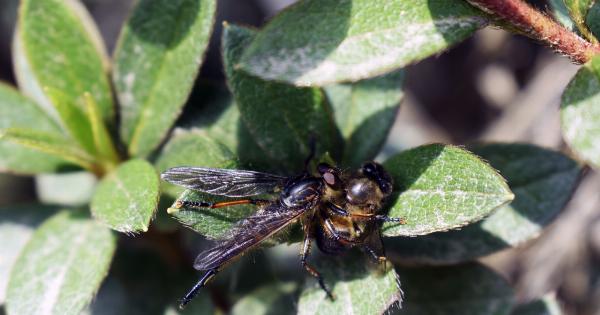Did you know that you may unknowingly consume around 500 grams of bugs every year? Yes, you read it right! It might sound unbelievable, but insects find their way into our food more frequently than we think.
These tiny creatures are present in various forms, and due to the lack of awareness, we consume them without even realizing it. In this article, we will explore the startling truth behind the ingestion of bugs without our knowledge.
Types of Bugs Consumed
Before delving into the details of bug ingestion, let’s understand the different types of bugs that end up in our food. Common examples include:.
- Aphids: These small insects are often found in leafy vegetables and fruits.
- Flies: Certain species of flies, such as fruit flies, can lay their eggs on fruits and vegetables.
- Mites: Often present in grains, mites are nearly invisible to the naked eye.
- Beetles: Flour beetles and weevils are common bugs found in cereal products.
- Caterpillars: These larvae are often accidentally consumed with leafy greens or on unwashed produce.
Reasons for Ingestion
Wondering how bugs end up in our food? Here are a few reasons:.
- Poor farming practices: Insect infestation can occur during cultivation, harvesting, or storage of crops.
- Processing and packaging: Bugs can inadvertently make their way into food during processing or packaging, especially in facilities with inadequate pest control measures.
- Transportation: During transportation, insects can find their way into food containers or packaging materials, leading to contamination.
- Cross-contamination: Bugs can easily move from one food item to another, especially in storage locations.
Health Risks and Benefits
While the thought of consuming bugs may be unsettling, it is important to note that most insects consumed unknowingly pose no significant health risks.
In fact, certain cultures intentionally include insects in their diet due to their high nutritional value. Some benefits of bug consumption include:.
- Nutritional value: Insects are rich in protein, vitamins, minerals, and healthy fats.
- Sustainability: In comparison to traditional livestock, insects require less space, water, and feed to produce the same amount of protein.
- Ecological balance: Consumption of insects supports the natural food chain, preventing certain insect populations from becoming pests.
However, for individuals with specific allergies or sensitivities, unintentional bug ingestion can occasionally lead to mild allergic reactions or digestive issues. It is always advised to consult a healthcare professional if any concerns arise.
Debunking Myths
Let’s clarify some common misconceptions surrounding bug ingestion:.
- Bugs in everyday food: Contrary to popular belief, bugs are not found in every single food item we consume. The occurrence is relatively low but still prevalent.
- Food safety regulations: Food safety regulatory bodies have strict guidelines regarding permissible limits of bugs in food, ensuring that the consumption remains within safe limits.
- Hidden bugs: While we may not notice bugs in our food, thorough cooking or washing significantly reduces the chances of accidental ingestion.
Prevention and Awareness
To minimize the unintentional consumption of bugs, here are some preventive measures and tips:.
- Thoroughly wash produce: Rinse fruits, vegetables, and leafy greens under running water to remove any potential bugs or eggs.
- Cook appropriately: Proper cooking techniques, such as heating foods to recommended temperatures, can eliminate bugs and reduce risks.
- Inspect food: Examine food items for any visible signs of bugs before consuming.
- Storage hygiene: Store food in airtight containers to prevent insect infestation.
- Fresher is better: Consume perishable items before their expiration dates to reduce the chances of bug infestation.
Conclusion
Although it may be unsettling to learn that we unintentionally consume bugs, their ingestion in small quantities is generally harmless.
By adopting proper food safety practices, such as thorough washing and appropriate cooking, we can minimize the likelihood of bug consumption. Additionally, awareness about the sources and prevention methods enables us to make informed choices.
So, the next time you enjoy your food, remember that a few extra grams might just be the “unintentional crunch” of nature’s tiny creatures!.






























